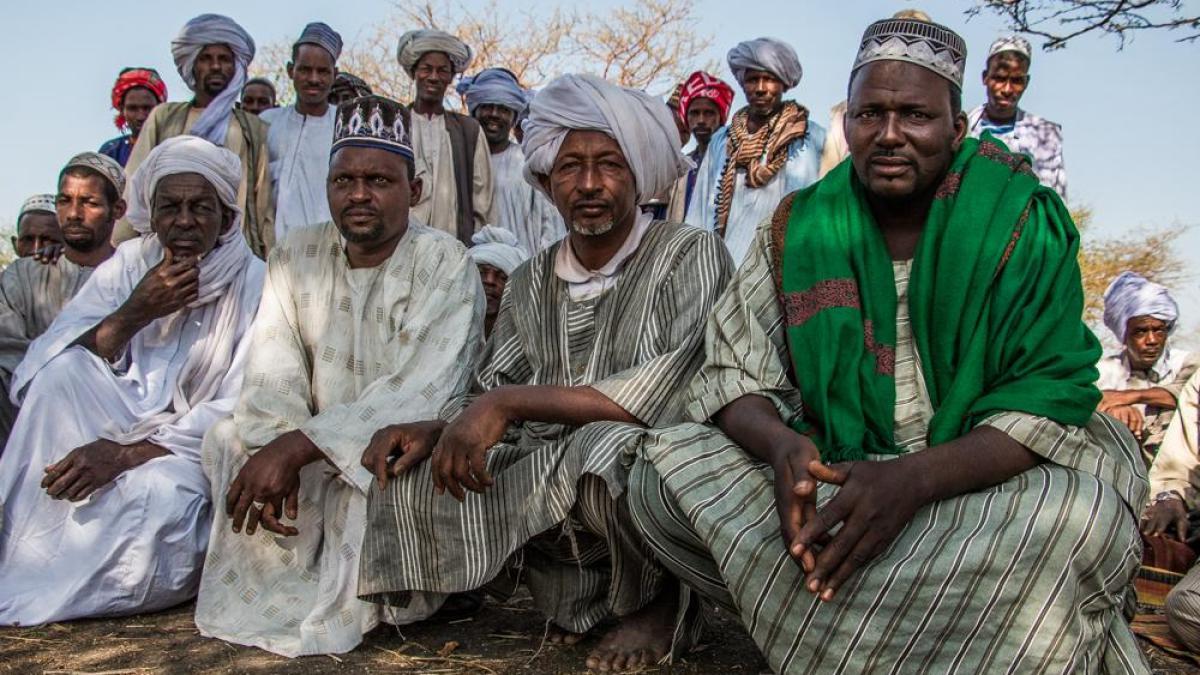
Ever wondered about the lives of ancient nomadic cultures? These fascinating groups roamed vast landscapes, leaving behind rich histories and unique traditions. From the Mongols of Central Asia to the Bedouins of the Arabian Desert, nomads have shaped human civilization in countless ways. But what makes these cultures so intriguing? Their ability to adapt, survive, and thrive in harsh environments offers valuable lessons for modern society. In this blog post, we'll explore 30 captivating facts about these forgotten nomadic cultures, shedding light on their daily lives, customs, and contributions to the world. Get ready to journey through time and discover the incredible stories of these wandering communities.
Key Takeaways:
- Nomadic cultures like the Mongols and Bedouins have unique traditions, survival skills, and spiritual beliefs that have shaped their rich histories and continue to influence their modern adaptations.
- Despite facing challenges from modernization and discrimination, nomadic cultures like the Tuareg and Sami people are resilient in preserving their traditional ways of life and cultural heritage.
The Mystique of Nomadic Cultures
Nomadic cultures have roamed the earth for centuries, leaving behind fascinating legacies. These groups, often misunderstood, have rich histories and traditions worth exploring.
-
The Mongols were one of the most powerful nomadic groups, establishing the largest contiguous empire in history under Genghis Khan.
-
Bedouins are desert-dwelling nomads known for their hospitality and intricate knowledge of the Arabian deserts.
-
The Tuareg people, also known as the "Blue People" due to their indigo-dyed clothing, navigate the harsh Sahara Desert.
-
Sami people, indigenous to the Arctic regions of Norway, Sweden, Finland, and Russia, are known for their reindeer herding.
-
The Romani people, often referred to as Gypsies, have a rich cultural heritage with roots tracing back to northern India.
Unique Traditions and Practices
Nomadic cultures have developed unique traditions and practices that set them apart from settled societies. These customs often reflect their deep connection to nature and survival skills.
-
Mongolian throat singing is a unique form of music where singers produce multiple pitches simultaneously.
-
Bedouin poetry, known as Nabati poetry, is an oral tradition that captures the essence of their desert life.
-
The Tuareg use a traditional script called Tifinagh, which dates back to ancient times.
-
Sami joik is a traditional form of song that conveys stories and emotions without using words.
-
The Romani have a vibrant tradition of music and dance, influencing many European musical styles.
Survival Skills and Adaptations
Survival in harsh environments requires ingenuity and resilience. Nomadic cultures have mastered the art of living in some of the world's most challenging landscapes.
-
The Mongols were expert horsemen, using their skills to travel vast distances and conquer lands.
-
Bedouins have perfected the art of finding water in the desert, often using ancient wells and underground springs.
-
The Tuareg are skilled navigators, using stars and natural landmarks to traverse the Sahara.
-
Sami people have developed specialized clothing made from reindeer hides to withstand Arctic temperatures.
-
The Romani are known for their adaptability, often taking on various trades and crafts to sustain their communities.
Social Structures and Leadership
Nomadic societies often have distinct social structures and leadership systems that ensure their communities function smoothly.
-
The Mongols had a hierarchical system with the Khan at the top, followed by nobles and commoners.
-
Bedouin tribes are led by Sheikhs, who are chosen for their wisdom and leadership qualities.
-
The Tuareg have a matrilineal society, where lineage and inheritance are traced through the mother's line.
-
Sami communities are organized into siidas, which are family-based groups that manage resources collectively.
-
The Romani have a council of elders, known as the Kris, which resolves disputes and makes important decisions.
Spiritual Beliefs and Practices
Spirituality plays a significant role in the lives of nomadic cultures, often intertwined with their daily practices and survival.
-
The Mongols practiced Tengrism, a shamanistic religion that worships the sky god Tengri.
-
Bedouins follow Islam, with many of their traditions and practices influenced by their faith.
-
The Tuareg practice a blend of Islam and traditional animist beliefs, often incorporating rituals to honor their ancestors.
-
Sami spirituality is deeply connected to nature, with shamans playing a crucial role in their religious practices.
-
The Romani have a diverse range of spiritual beliefs, often blending elements of Christianity, Hinduism, and local traditions.
Modern Challenges and Adaptations
In today's world, nomadic cultures face numerous challenges as they strive to maintain their traditional ways of life while adapting to modernity.
-
The Mongols have seen a resurgence of interest in their nomadic heritage, with many returning to traditional practices.
-
Bedouins face pressures from modernization and urbanization, leading to changes in their traditional lifestyles.
-
The Tuareg have been affected by political instability in the Sahara region, impacting their nomadic routes.
-
Sami people continue to fight for their rights and recognition, particularly in relation to land and reindeer herding.
-
The Romani face widespread discrimination and marginalization, yet they continue to preserve their rich cultural heritage.
The Legacy of Nomadic Cultures
Nomadic cultures have left an indelible mark on history. Their innovative survival techniques, rich traditions, and unique social structures offer invaluable lessons. From the Mongols' military strategies to the Bedouins' desert navigation skills, these groups adapted to their environments in remarkable ways. Their oral histories and artistic expressions continue to inspire and educate.
Understanding these cultures helps us appreciate human resilience and adaptability. It also sheds light on the diverse ways societies can thrive. As we move forward, let's remember the contributions of these often-overlooked communities. Their stories remind us that there's more than one way to live a fulfilling life. So next time you hear about a nomadic group, take a moment to appreciate their rich heritage and the lessons they offer.
Frequently Asked Questions
Was this page helpful?
Our commitment to delivering trustworthy and engaging content is at the heart of what we do. Each fact on our site is contributed by real users like you, bringing a wealth of diverse insights and information. To ensure the highest standards of accuracy and reliability, our dedicated editors meticulously review each submission. This process guarantees that the facts we share are not only fascinating but also credible. Trust in our commitment to quality and authenticity as you explore and learn with us.


